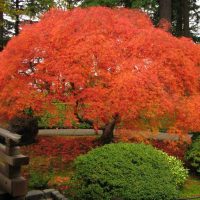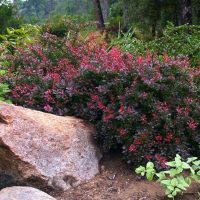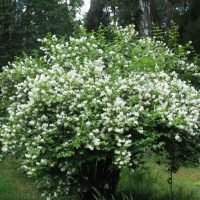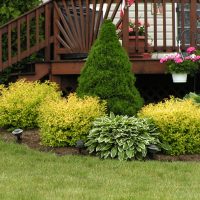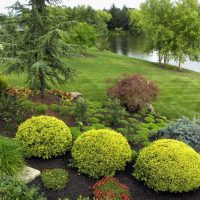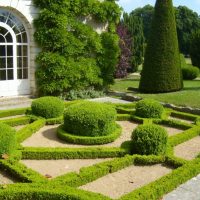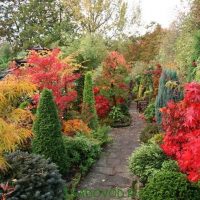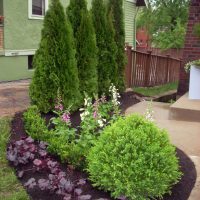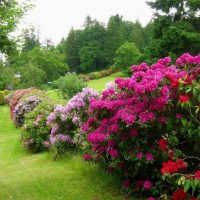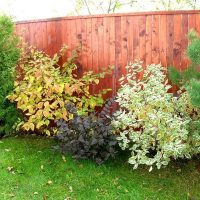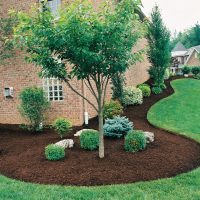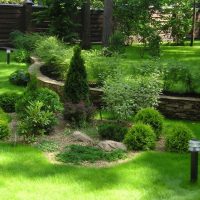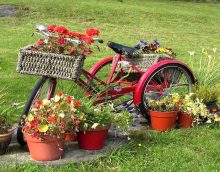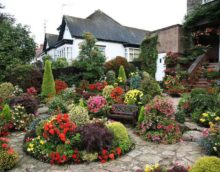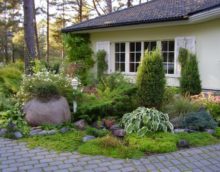How to apply shrubs in landscaping
Ornamental shrubs play a significant role in the landscaping of the garden. Sometimes they form “skeletal plantings”, which become the central axis of the composition. In some cases, they are used as a bright accent on the background of garden plantings. They are used to create a hedge or cut out from them geometric shapes. Today it is no longer possible to imagine the modern design of gardens and parks without the whole variety of decorative-deciduous and flowering shrubs.

Shrubs are a link between trees and grass plants.
Content
- 1 Variety of assortment: what to choose for decoration of a personal plot?
- 2 What to consider when choosing decorative shrubs?
- 3 Trees and shrubs in the garden landscaping
- 4 Compositions of trees and shrubs in the garden
- 5 How to arrange trees and shrubs in the garden?
- 6 Trees and shrubs in garden design are the best “candidates” for landscape compositions
- 7 The original arrangement of trees and shrubs in the garden
- 8 Popular decorative foliage shrubs and the art of topiary haircuts
- 9 Flowering shrubs in your garden: photo, varieties, application
- 10 How to plant and care for plants?
- 11 Video review from an expert: Ornamental shrubs blooming all summer
- 12 Photo: Shrubs in the garden landscape
Variety of assortment: what to choose for decoration of a personal plot?
The varieties and varieties of shrubs that are used in landscape design are a great many. Gardening stores offer a wide range of similar products. In order for the purchase to be successful and delight for many years, you must first determine its purpose.

Shrubs can decorate various areas in the garden
Shrubs in landscape design can perform several different functions:
- Decoration of the site. This is the main purpose of plantings. They have been used for many years to decorate courtyards of private houses, parks, territories near urban buildings.
- Arrangement of a recreation area. A great option for creating a comfortable and cool gazebo is to plant the perimeter with evergreen arborvitae or juniper. Then such plantings will bring health benefits. After all, cypress trees are famous for their antiseptic and antibacterial properties.
- Replacing trees. Trees occupy a large space. They have a spreading crown and deep roots. They create shading and do not allow other “green inhabitants” of the plot to develop normally. Shrubs do not have such negative qualities. Low and medium-sized species allow you to create beautiful landscape compositions without compromising the rest of the flora on the site.
- Fencing. Often, ornamental shrubs act as hedges. They do an excellent job of delimiting land boundaries. They are sheared and often attached to geometric or fantasy shapes.
- The link in the layout. In multicomponent landscape design schemes, shrubs can combine garden elements together. They often plant between trees. At the same time, they help to form an organic garden composition.
- Bright accent. There are many decorative flowering varieties that, with their lush inflorescences, will revive the monotonous construction of the garden landscape.

Shrubs look good at forks and bends of garden paths
But, of course, the main purpose of shrubs in landscape design is to decorate the garden.
What to consider when choosing decorative shrubs?
When buying decorative shrubs, it is important to remember that each of them has its own characteristics. Care for each of the varieties is different - there are capricious and unpretentious cultures. So, if you decide to give your garden an artistic content, then you need to consider the following nuances.
Function. First of all, it is necessary to determine why decorative trees or bushes are bought. For zoning of the site, one variety is selected, and for decoration of pergolas or arbors - others.

Shrubs planted at the border of the site will protect from drafts and prying eyes.
Compatibility with other cultures. If there are already trees on the site, then it is better to use medium-sized shrubs. They harmoniously fit into the big picture.
Dimensions. When deciding on a choice, do not forget to ask how large the plant grows in height and width. The height of some species can even exceed trees. There are also antipodes to giants - dwarf and mid-sized varieties. They are marked with the nana mark. They are best planted in groups so that they are not lost in the space of the land.

Compact varieties with unusual foliage, for example, Tunberg barberry, are suitable for a small garden
Growth focus. When choosing a variety, it must be borne in mind that, depending on the direction of growth, ornamental shrubs are divided into three large groups:
- Vertical. They look like trees, grow up. They have distinct trunks and a high crown. An example is hawthorn.
- Horizontal The width of the crown is much larger than the height of the barrel. Location - horizontal to the ground. Sometimes they form an almost even parallel with the soil, such as horizontal juniper.
- Spherical. This class includes all varieties with a round crown, such as lilac or viburnum.

Kalina will delight in the fall red berries that will remain in the winter, if they are not picked for jam
In landscape design, varieties with different directions of growth are used to beat the space of the infield and create real art masterpieces.

Rose bushes are a great way to dilute the monotony of grassy lawn.
Trees and shrubs in the garden landscaping
Shrubs can be planted as independent islands. But groups that use diverse bushes and trees look much more interesting. Mini-groups look especially impressive.

Mixed garden composition of coniferous and deciduous shrubs
What is their feature:
- Compactness. A small amount of space is involved. No more than 2-4 types of crops are used.
- The vertical structure of the garden. Such landings form a vertical around which the composition is further constructed.
- Background for other plant ensembles. Mini planting will be a great backdrop for the rest of the plantings and compositions.

Any garden composition should look good from different points of the site
Compositions of trees and shrubs in the garden
A similar complex in the language of landscape designers sounds like "skeletal planting." They are called so because they create the "backbone" of the garden, onto which the rest of the "plant content" is built up. “Skeletal plantings” serve as a durable “canvas” for perennials and annuals. And if single plants are a catchy accent in the composition, then ensembles set the style and form the structure of the arboretum.

Each group should have plants of different shapes and sizes.
How to arrange trees and shrubs in the garden?
It is not so easy to pick up and arrange plants in complex plantings as it seems at first glance. To do this, several factors must be taken into account:
- Sizes of planting material.
- Massive crown and overall dimensions.
- The silhouette that this or that garden culture forms.
- The visual effect that a single planting or group of plantings will have.

Spectacular company - shrubs with various foliage colors and flowering plants
Rules for composing landscape compositions in which trees and shrubs participate:
- Choose species that are different in shape of growth. Trees blend well with squat bushes. A successful tandem is a decorative cherry with one of the representatives of cypress or rhododendrons.
- Create contrast in colors. Against the background of dark green foliage, which trees are wrapped in, you need to make a few strokes of bright or colorful color. Varieties of bushes with speckled, pockmarked, spotted or striped leaves will help in this.
- Combine a thick and “openwork” crown in a duet. So massive and dense spruce branches will be wonderfully combined with small-leaved trees.
- Arrange trees and bushes in rows. You can not plant all the elements of planting in one line. It is advisable to arrange them in several rows. It is important to consider that the first row should not overlap the crown of the next by more than 30%.

Be sure to plant conifers with which the garden will not look dull in winter
Trees and shrubs in garden design are the best “candidates” for landscape compositions
Ideal options for creating integrated plantings in the garden are hydrangea and rhododendron. In landscape design, such a combination is considered classic and the most successful. Firstly, both have two undeniable advantages - a dense crown of leaves and lush inflorescences. Secondly, they bloom, replacing each other and providing beautiful floral hats for almost the entire warm season. They can be supplemented with other “neighbors” in the foreground: Kerria, Weigela, Spirea, and action. Then landing from spring to autumn will delight with a riot of colors and incredible beauty.

Hydrangea blooms in large dense inflorescences of a spherical or conical shape

Azalea and Rhododendrons in front of the front door of a private house
The original arrangement of trees and shrubs in the garden
The garden will become much more original if you choose an unusual design style for it. You can try to create a landscape design in a regular style.

Geometrically regular shapes are the main difference between a regular style garden
Its main features:
- Geometric shapes. Landings are arranged according to strict geometric rules.
- Flat crown. The foliage and branches are trimmed to achieve a perfectly flat surface.
- Varieties suitable for haircuts. Varieties that are easily amenable to topiary design are selected: Western arborvitae, small-leaved linden, Irga, hawthorn, common juniper, yew berry, boxwood, privet. Only then can rectangular, square and spherical silhouettes be formed that regular gardens are famous for.

Regular style loves order in everything, paths should be straight and flower beds symmetrical
If the severity of forms is not to your liking, then there is another unusual option - a landscape garden. Straight lines and clear geometry are alien to him. It imitates the nature of the wild corners of the forest.
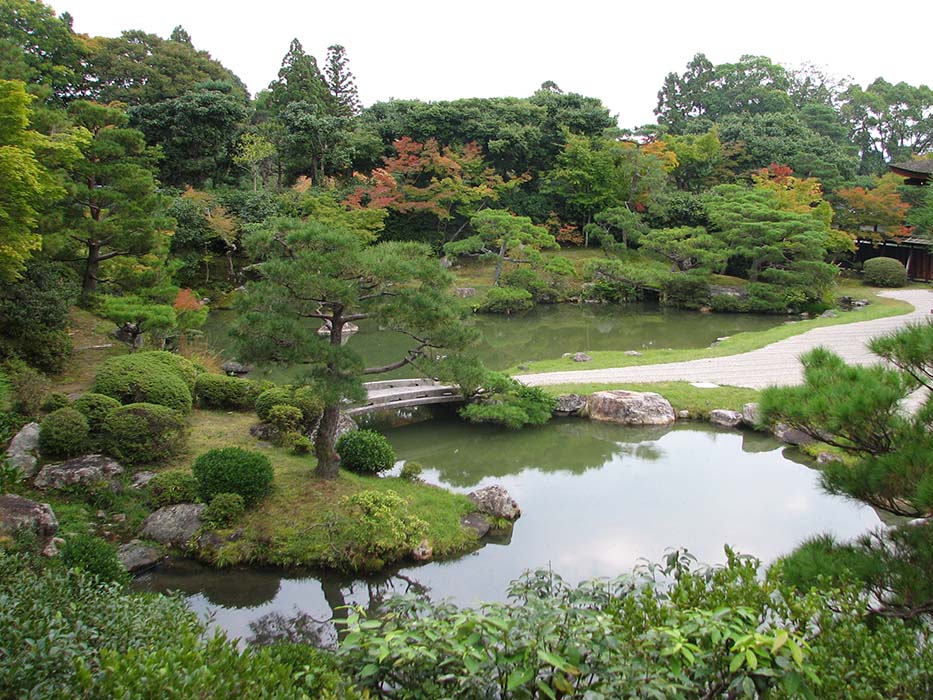
Landscape style is simple and natural, as in the wild
Its distinctive features:
- Naturalness and slight negligence. The garden should remotely resemble a forest edge.
- The combination of different types of plants - conifers and deciduous.
- No evenly cropped crowns. They resemble nature as much as possible.
- Diverse combinations of coniferous and shrubby varieties. In one landing, spruce, juniper and thuja with hawthorn, snowberry and bladderweed are wonderfully combined.
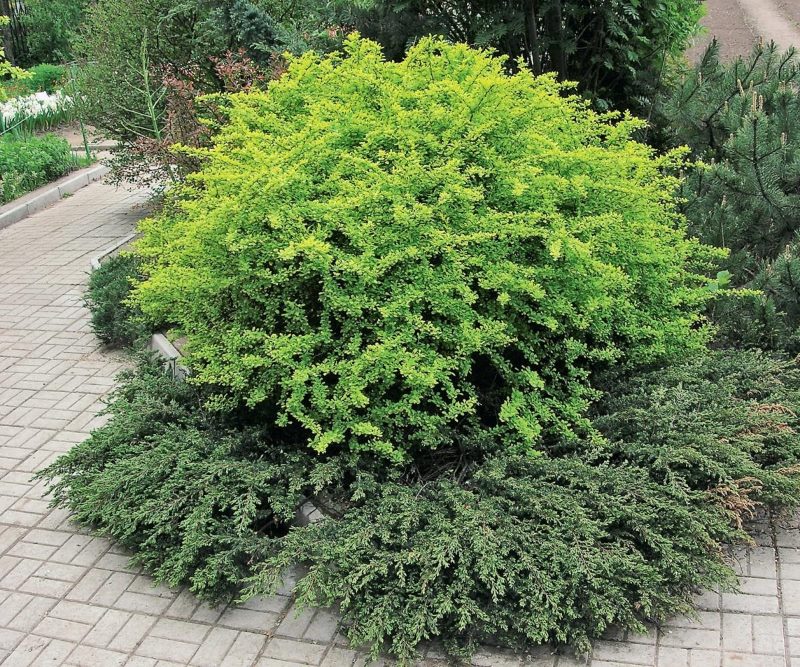
The dark green needles of juniper successfully distinguishes the light foliage of barberry
Popular decorative foliage shrubs and the art of topiary haircuts
Some shrubs of nature awarded foliage of incredible beauty. They are appreciated among gardeners no less than flowering varieties. Their foliage is striking in a variety of shapes and colors. At a great price for landscape designers such decorative foliage varieties as:
- Japanese maple;
- Aralia
- barberry;
- cystic fibrosis;
- stefanander.
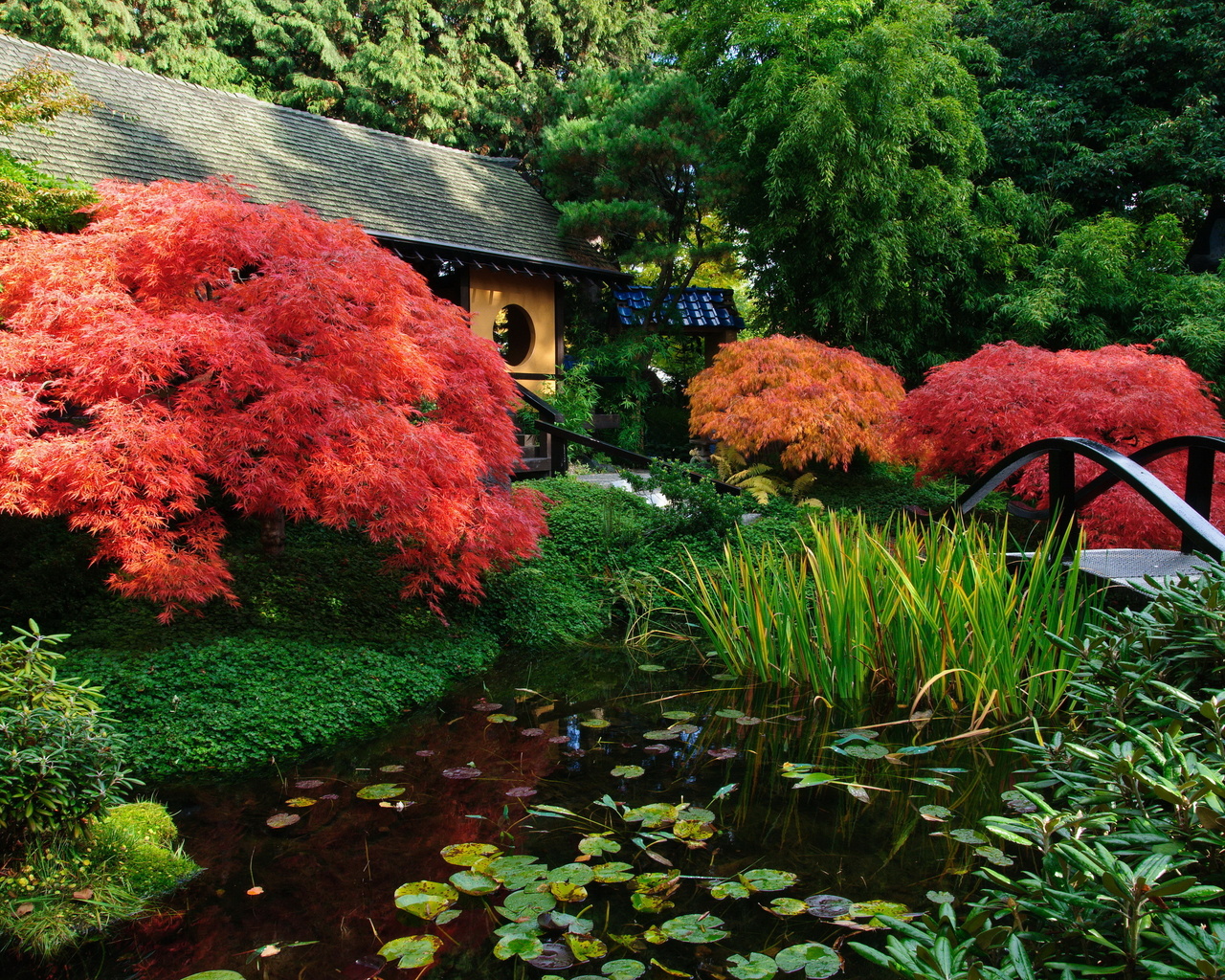
Japanese maple with an unusual crown of red shade will make the garden unusually picturesque throughout the entire warm period
In addition, many specimens from this group are used to form hedges. Privet, European euonymus, caragana, white derain, Tatar honeysuckle, silver goof - all of them are also great for zoning a site.

Privet is great for hedges
All varieties that are suitable for hedges are wonderful material for topiary or curly haircuts. To create garden figures from the crown, coniferous species are also used - juniper, western thuja. Intricate spirals, triangles, balls can be cut out of them. Or create silhouettes of birds and animals. But for this you need a special frame, which is overgrown with branches. Then, the desired figure is cut out along the contour of the frame.

Bladder bushes easily tolerate haircuts
Flowering shrubs in your garden: photo, varieties, application
Flowering varieties are a double bonus for the gardener. They not only delight with their decorative foliage, but also fascinate with caps of inflorescences.

An ideal place for planting rhododendrons - partial shade under large, old trees
The most popular flowering species:
- Rhododendron. It is considered the most beautiful, but also the most demanding and difficult to care for. But if you learn the rules of care, then it will become the central decoration of the garden. Inflorescences can be of different shades - from white and pink to purple and lilac.
- Hydrangea. In gardening, tree hydrangea is most valued - not too picky to care for, but very beautiful during flowering. Shades of spherical inflorescences are very different. From white and beige to lilac and blue. Moreover, the color often depends on the composition of the soil.
- Spirea. Unpretentious, hardy, generously decorated with flowering flowering branches. There are varieties blooming in spring or summer. The color of inflorescences is from snow-white to bright pink.
- Jasmine. It can impress not only with white flowers, but also with a pleasant aroma. If you choose the right variety depending on the climate of the region, then there should not be any special problems during cultivation.

Jasmine is quite undemanding to the place of landing and will grow both in the sun and in shading
The no less luxurious flowering assortment includes the following “garden dwellers”:
- mountain ash of mountain ash;
- hawthorn;
- lilac;
- Forsythia
- rosehip;
- viburnum;
- mock-up;
- park roses;
- buddley.

Forsythia bushes planted along a metal fence
How to plant and care for plants?
When landing, it is important to observe several rules:
- It is advisable to plant a seedling in the fall.
- The pit for the bush is spacious, the roots should not be crowded when planting.
- The bottom of the pit loosens slightly, a little compost is poured and a fertilizer with a prolonged action is put.
- In the center of the pit is a peg to which, after planting, a seedling is attached.
- The roots of the layer should be straightened and laid out along the bottom of the fossa.
- The soil during planting must be carefully trampled.
- A round groove is made around the seedling so that the water does not flow.
- After planting, the bush is watered abundantly.
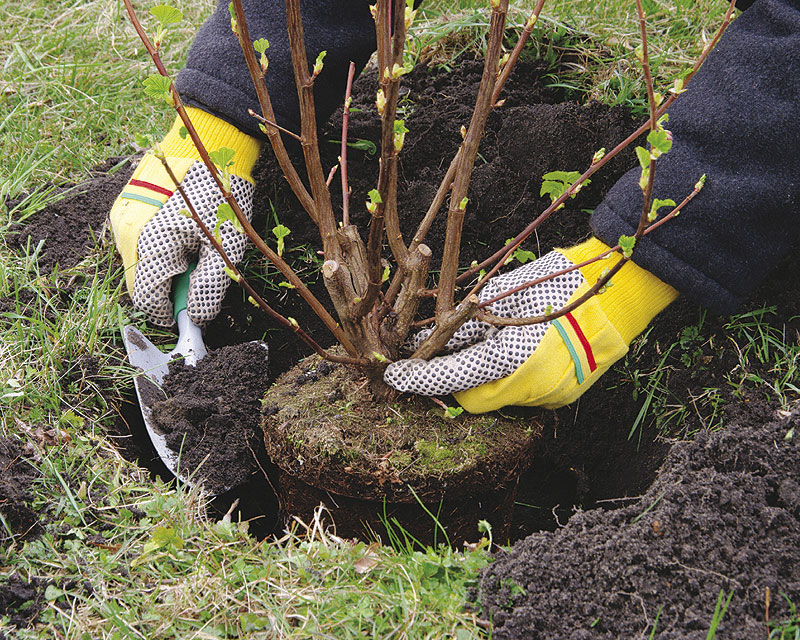
When planting, it is important to consider the subsequent growth of the shrub and its adult dimensions, so that later you do not have to transplant the plant to another place
Further care depends on the variety. But there are several general recommendations: the soil around the branches should be loosened and watered periodically. Shoots are cut from time to time, and old branches are removed. Faded inflorescences are cut so that the bush does not lose its decorative effect.
Video review from an expert: Ornamental shrubs blooming all summer








